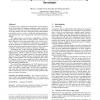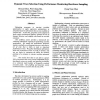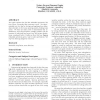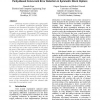114 search results - page 5 / 23 » Using likely program invariants to detect hardware errors |
ASPLOS
2006
ACM
14 years 1 months ago
2006
ACM
Concurrency bugs are among the most difficult to test and diagnose of all software bugs. The multicore technology trend worsens this problem. Most previous concurrency bug detect...
CGO
2003
IEEE
14 years 23 days ago
2003
IEEE
Optimizing programs at run-time provides opportunities to apply aggressive optimizations to programs based on information that was not available at compile time. At run time, prog...
ITC
2000
IEEE
13 years 12 months ago
2000
IEEE
Concurrent error detection (CED) techniques (based on hardware duplication, parity codes, etc.) are widely used to enhance system dependability. All CED techniques introduce some ...
SIGSOFT
2002
ACM
14 years 8 months ago
2002
ACM
This paper explores the idea that redundant operations, like type errors, commonly flag correctness errors. We experimentally test this idea by writing and applying four redundanc...
ITC
2003
IEEE
14 years 22 days ago
2003
IEEE
Deliberate injection of faults into cryptographic devices is an effective cryptanalysis technique against symmetric and asymmetric encryption. We will describe a general concurren...




